If you’re a regular reader of the Gentleman’s Gazette, there’s a good chance you’ve noticed us use the phrase “cost per wear” a few times before (or, frankly, pretty often)! Today, we’ll tackle the simple equation that can help you make worthwhile and enjoyable purchases, and provide some additional insights for smarter shopping.
- What is Cost Per Wear?
- How Should Cost Per Wear Be Applied?
- Determining Factors: 1. How Fashionable An Item Is
- 2. How Well An Item Has Been Made
- 3. How Often You Expect To Wear An Item
- Examples of Clothing With A Definite Lifespan
- Examples of Garments With An Indefinite Lifespan
- Cost Per Wear In Action
- Ideal Supplements to Cost Per Wear: 1. Research Before You Buy
- Outfit Rundown
What is Cost Per Wear?
Put simply, “cost per wear” is a methodology of breaking down the initial upfront cost of a garment by how many times you’re actually going to wear it. For example, if the sticker price of a garment is $100 and you wear it a hundred times before getting rid of it, then the effective cost per wear is $1. Meanwhile, if you buy that same garment for $100 but only wear it twice, you’re effectively dealing with a cost per wear of $50, which is much higher and less efficient.
This is the simplest way of defining “cost per wear,” but in reality, the overall metric can actually get much more complex. Of course, no two items are exactly the same and therefore, everything is actually going to have its own individual cost per wear.
As just one example, a tuxedo and underwear should be considered differently and thus, have the metric applied to them in different ways, as we’ll get into later on. And in the abstract sense, one thing that this equation can’t account for is a garment or other item’s personal value to you individually.
After all, only you can know how much something matters to you–and this represents the difference between the cost of an item, or how much money you’ve paid for it, and the value of the item, its significance to you on a personal level.
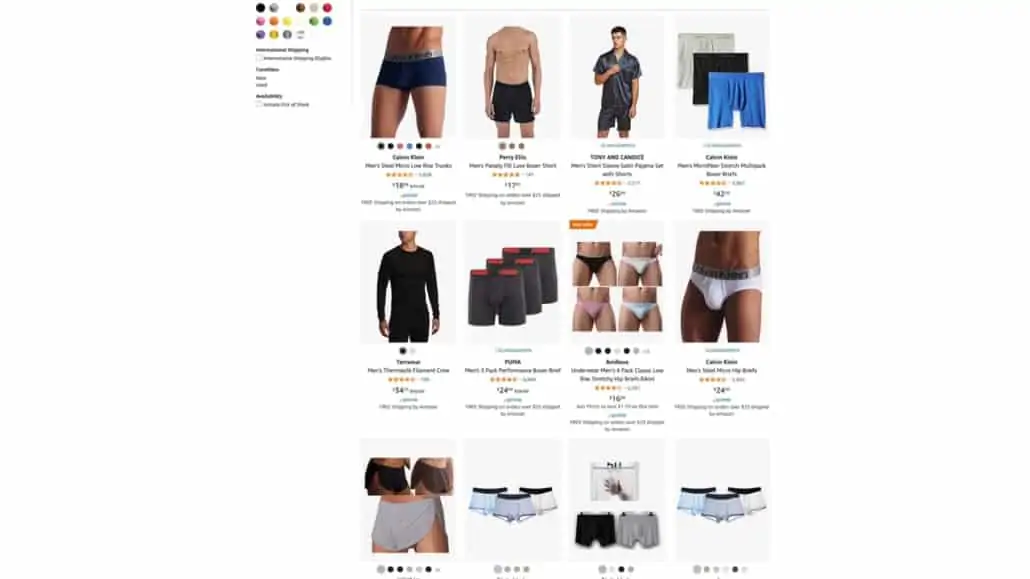
Let’s again use the example of undergarments here, with something like expensive silk underwear. Some men may think these are worth it, as they’re going to wear them close to their skin all day. Other men might not think they’re worth it, as no one else (or at least, mostly no one else!) is ever going to see them. Now, let’s explore what else cost per wear can be applied to.
How Should Cost Per Wear Be Applied?
First of all, you should apply cost per wear to items that have a repeated use. This is the sense in which we’re going to use the term most, because we strive to find garments that can be purchased once and worn indefinitely or, indeed, for a lifetime. Just imagine how expensive things would be, for example, if we had to buy a new suit every time we wanted to wear one!
But, then, how can you work out how many times, or roughly how often, you’re actually going to wear something that you buy? You’ll need to understand the average lifespan of a garment, and in order to do this, you’ll have to consider a few factors.
Determining Factors: 1. How Fashionable An Item Is
In other words, is this garment simply riding a trend? You can think of the flared trousers of the 1970s or the power suits of the 1980s for example. These were high-fashion items that were very popular when they were first introduced, but then lost steam after only a short time.
Having a garment like this in your wardrobe, where it’s just going to sit in your closet for years at a time, means you’ll only be able to wear it in a few instances and it will, thus, have a relatively high cost per wear.
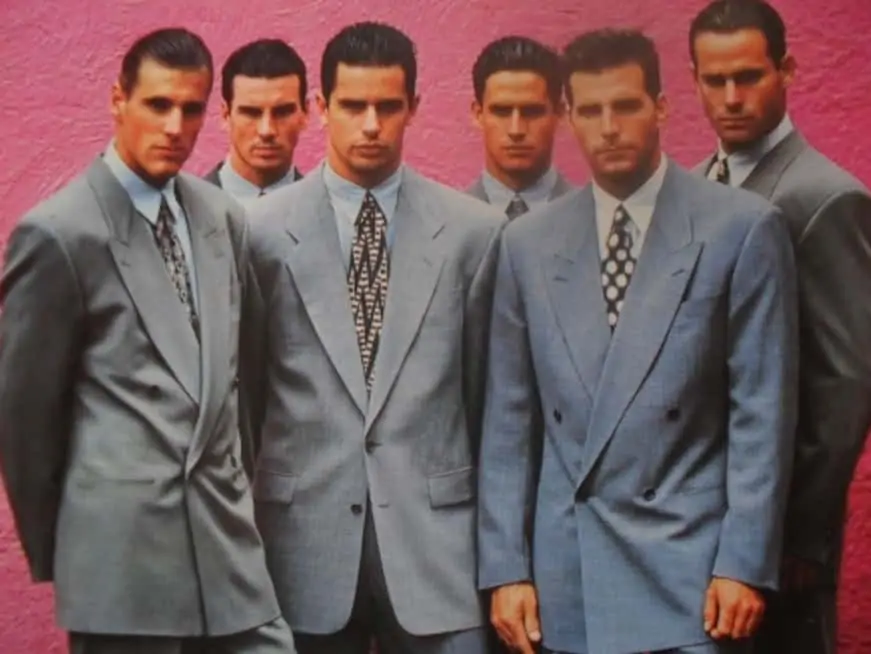
This consciousness of trends should also apply to the garments of today. For instance, you can look at the current trend of extremely skinny-fit trousers that have no break, paired with shorter jackets that are also similarly thin. Like bell-bottom pants, this style of suit is bound to go out of fashion at some point and will eventually be difficult to wear.
On the other hand, a well-proportioned classic suit is going to be timeless and you’ll be able to wear it for a lifetime. And if you’re curious about how to find a suit that fits you properly, you can find more information on our guide to the right suit fit.
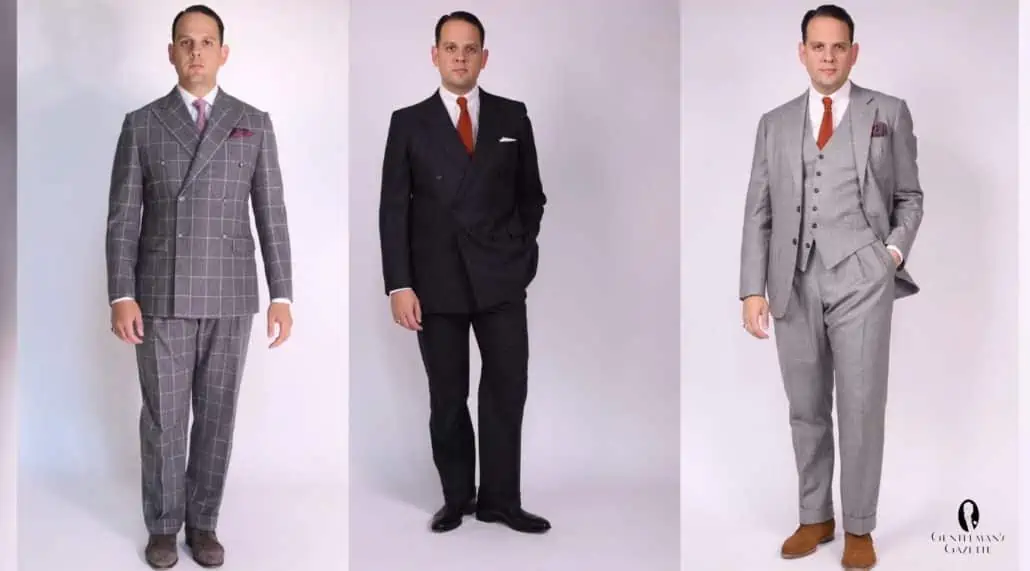
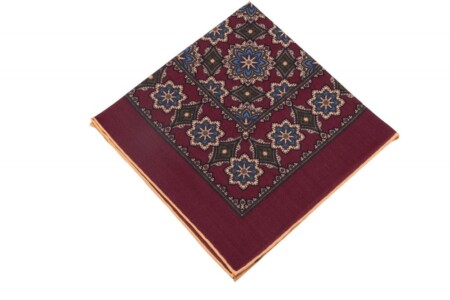
Fort Belvedere
Burgundy Red Silk Wool Pocket Square with Printed geometric medallions in olive green, light blue, cream and orange with beige contrast edge by Fort Belvedere
2. How Well An Item Has Been Made
If a garment has been constructed from quality materials with techniques that show a high level of craftsmanship, it’s probably worth investing in. Meanwhile, much of fast fashion and other off-the-rack clothing today is often made cheaply from lower-quality materials and with lower overall levels of workmanship.
Nevertheless, if you know what to look for, you can still find garments with higher levels of construction. You could, for example, look for things like a high-stitch density, matched patterns from different sections of the fabric, and handmade buttonholes.
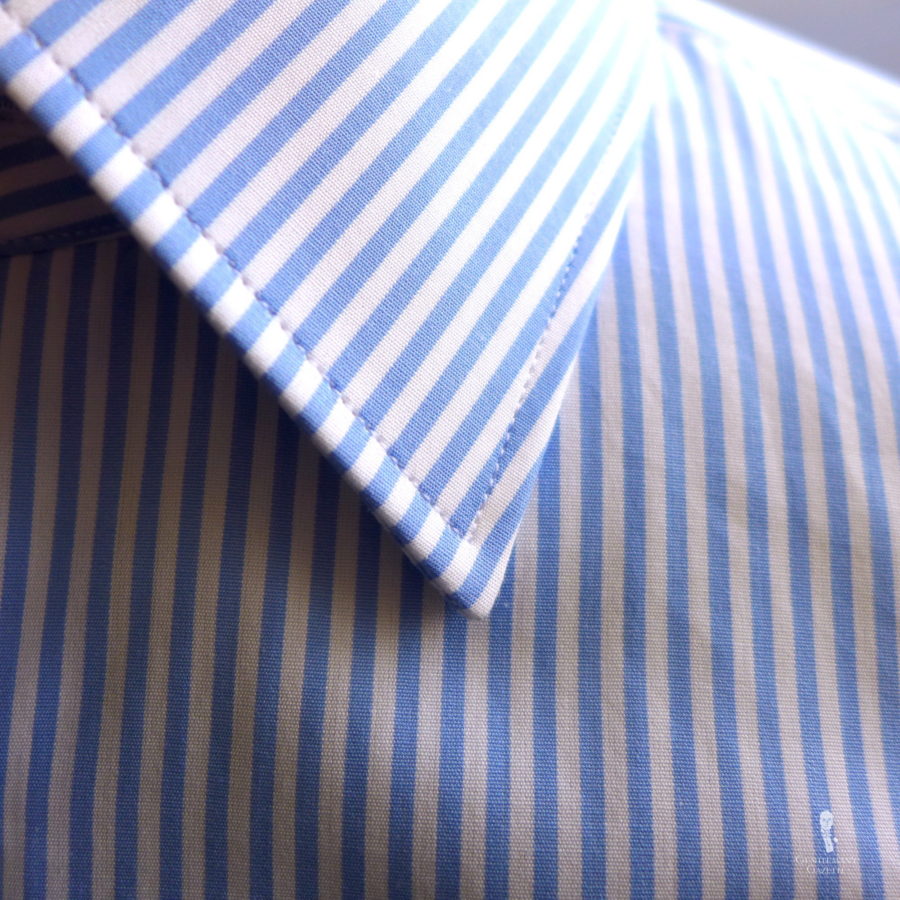
Natural fibers such as wool, cotton, silk, and linen are generally going to be superior to man-made fibers like polyester and nylon. This is because natural fibers, overall, are going to be more breathable and help you to be more comfortable and better regulate your body temperature.
3. How Often You Expect To Wear An Item
For example, are you looking at a seasonal piece like a straw hat or a winter overcoat? Clothing that is designed only to be worn for a portion of each year can have its advantages and, indeed, we do enjoy dressing seasonally.
However, since some items aren’t going to be worn throughout the year and are only going to be confined to certain sections of it, you’re definitionally going to wear them less often. So, it’s even more important to ensure that, stylistically, they are classic and can be worn season after season when the time is right.
As an example, an overcoat made from natural fibers like camel hair and styling that is conservative and not too wild in any direction will be a timeless piece that you should be able to wear for years to come. And, of course, some items are going to have even more regular use in your wardrobe such as a middleweight suit in a classic color like navy or gray.
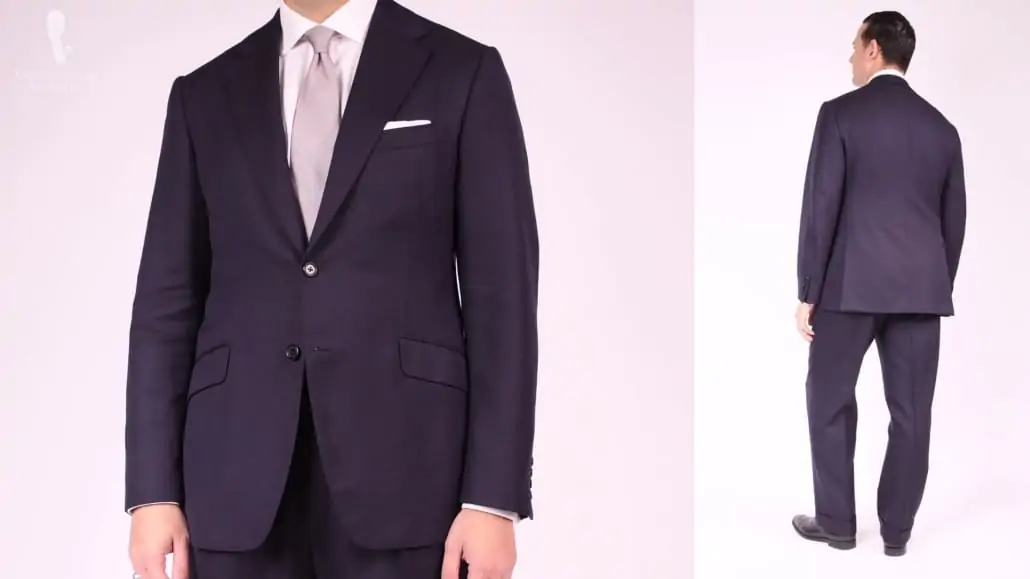
If it’s made from a good quality middleweight wool, it should be able to be worn comfortably almost year-round and can be supplemented with more seasonal items like overcoats and scarves in winter or Panama hats and linen ties and shirts in the summer.
Essentially, by asking these questions when you purchase an item of clothing, you’ll be getting toward answering whether or not that item has a definite or an indefinite lifespan.
Examples of Clothing With A Definite Lifespan
To further this point we’ve put together a list of a few examples of clothing that has a definite lifespan, which means that its use and wear will eventually come to an end.
1. Underwear
First up – and perhaps you’ve guessed it – is underwear. Because of the simple fact that underwear is a daily use item, it will be subjected to a fair amount of wear and tear over the course of its lifespan.
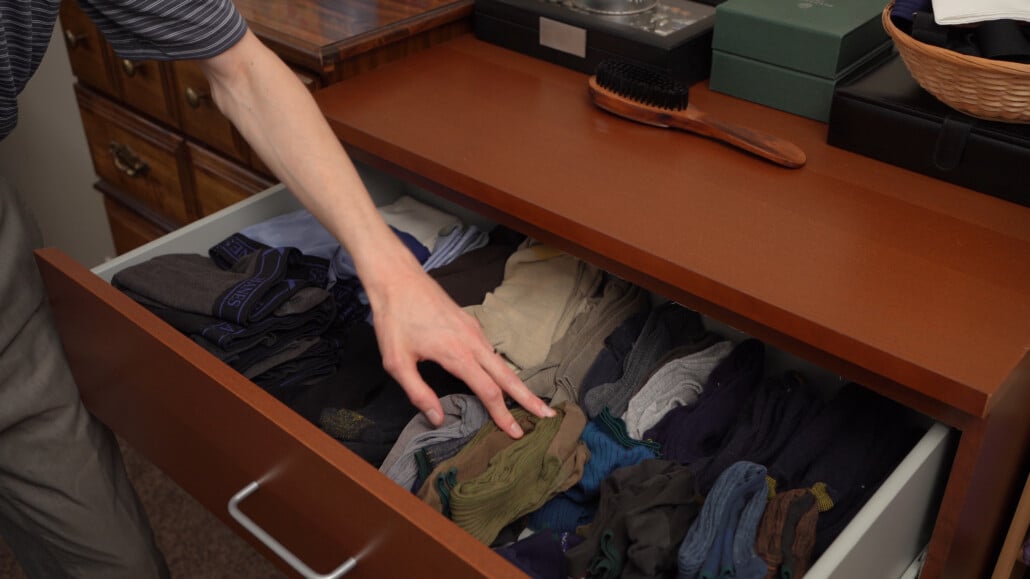
Many men, of course, are going to have a well-stocked rotation of undergarments to wear. But, eventually, the time comes for all of them to be thrown away.
2. Socks
Similarly, even the finest quality socks are also going to have a definite lifespan. Being close to your feet and toenails all day means that they’re going to get scraped up over time. It’s very common to see holes appear in socks, whether on the heel from repeated friction while walking, or in the toe area as the toenail works its way through the fibers of the socks.
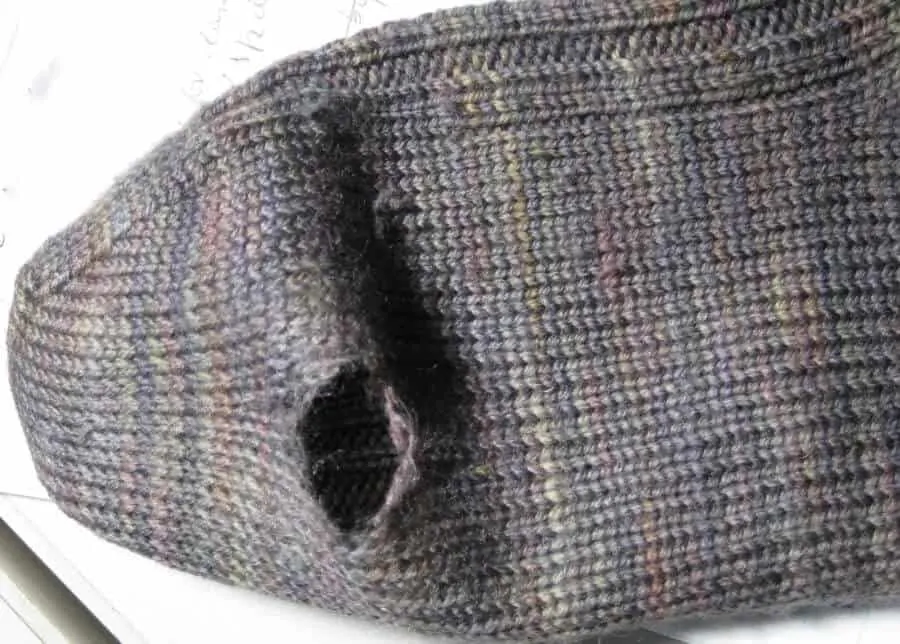
Although there are plenty of guides on the internet about sock repair and maintenance, eventually, you’re going to end up with a stitched-together sock that’s hanging on for dear life–a Franken-sock if you will.
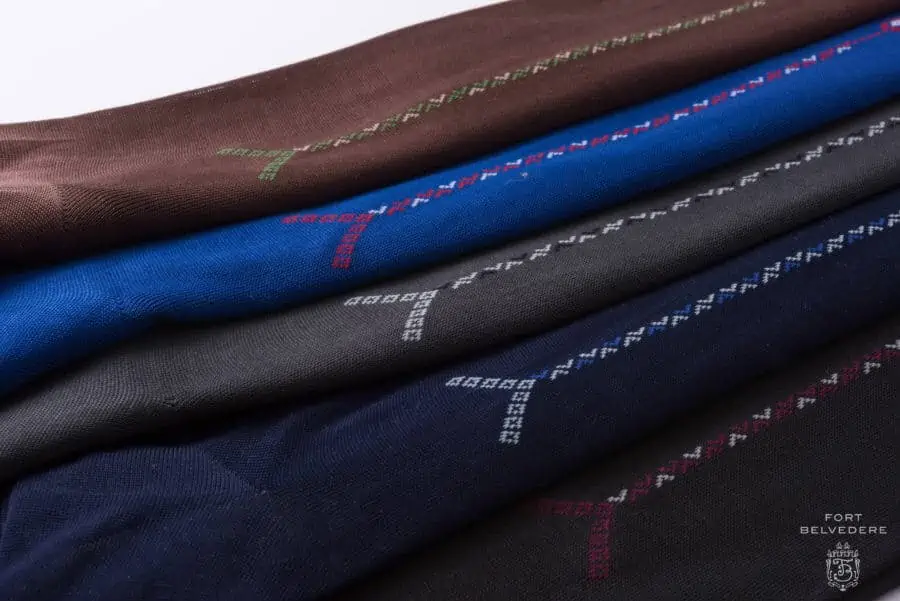
So, anything worn frequently will wear out more quickly and this is just one of the reasons why we offer a bulk-buy discount on our socks in the Fort Belvedere shop. The more pairs you buy, the lower the price for each pair is going to be. So, you’ll be able to build an even more robust collection.
3. Dress Shirts
Next up in this category would be dress shirts. It’s a sad fact that even the highest quality bespoke dress shirt will have a definite lifespan. No matter how well you take care of your shirts, the collars and cuffs are going to show wear eventually.
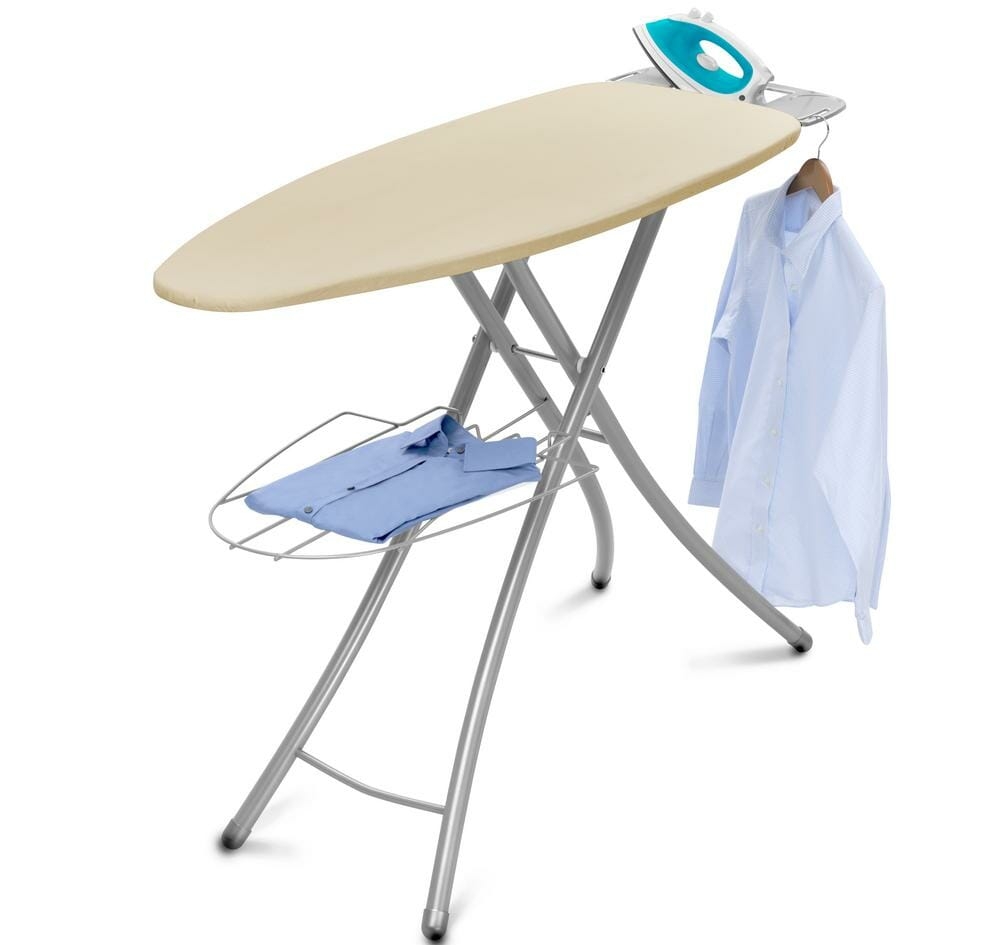
With that said, it’s also worth mentioning that for all of the items in this category, though they do have a definite lifespan, you can extend this lifespan by caring for them properly and wearing them in rotation.
Examples of Garments With An Indefinite Lifespan
1. Black Cap-Toe Oxfords
First up would be a black cap-toe oxford. It’s often crowned as the “king of dress shoes” and it’s a must-have in any man’s wardrobe.
The style first rose to prominence in the 1820s and it’s remained largely unchanged ever since, which is a testament to its longevity and stylishness. Of course, it’s an ideal choice for white-collar business wear.
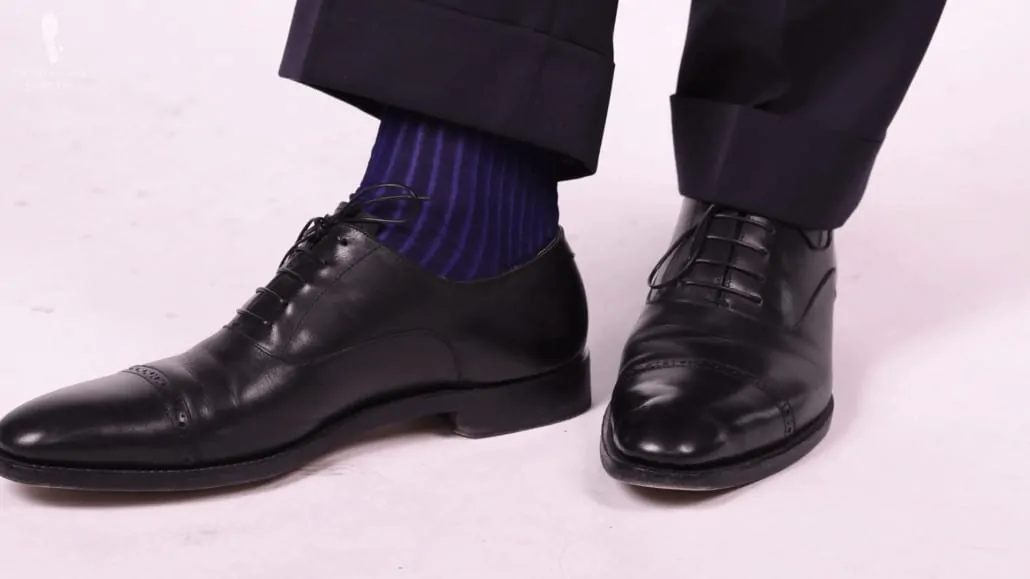
With a high shine, it can even be worn in formal ensembles like Black Tie and White Tie, too. If you buy a shoe with a high-quality construction method like a Goodyear welt or a Blake stitch, the shoe can also be re-soled when the sole gets worn, extending its wearable life even further.
2. A Navy Grenadine Tie
Next up would be a navy grenadine tie and, indeed, if you were to have only one tie in your wardrobe, a navy grenadine would be a solid choice. Though we’re assuming that, like us, you probably have more than just one tie in your wardrobe.
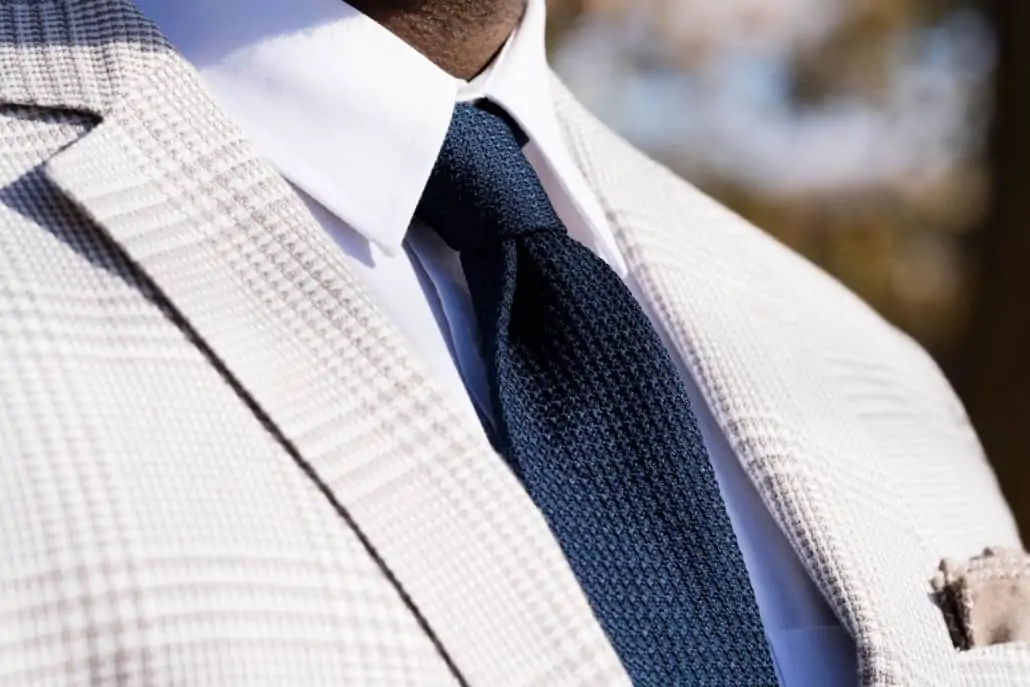
The dark navy color works well for formal occasions, but given that it’s not as somber as black, it can also be worn in less formal settings as well. And the unique texture of the grenadine weave will give it more visual interest than a plain silk tie. The ever-stylish James Bond, for instance, can be seen wearing navy grenadine ties from as early as his film debut in 1962.

3. Simple Cufflinks
As a final example here, a pair of simple but well-constructed cufflinks are going to be an item that also has an indefinite lifespan. Indeed, such a pair of cufflinks can often be considered an heirloom item that will be passed down through generations.
And even though you may not wear a double-cuffed or French-cuffed shirt every day, a pair like a monkey’s fist knot cufflinks from Fort Belvedere will be there for you whenever you need them. A pair like these, for instance, crafted from sterling silver and plated with lustrous yellow gold, won’t tarnish over time and they can be worn easily with both formal and casual ensembles.
Cost Per Wear In Action
Let’s now turn to a concrete example of cost per wear in action with the Trialmaster Panther jacket from Belstaff. At the time of this writing, the upfront cost is $1,795.
To ascertain what its cost per wear might look like, we’ll apply the points that we’ve already discussed. We go over the jacket itself more in-depth in our Is It Worth It? review. So, today, we’re simply going to focus on its cost per wear.
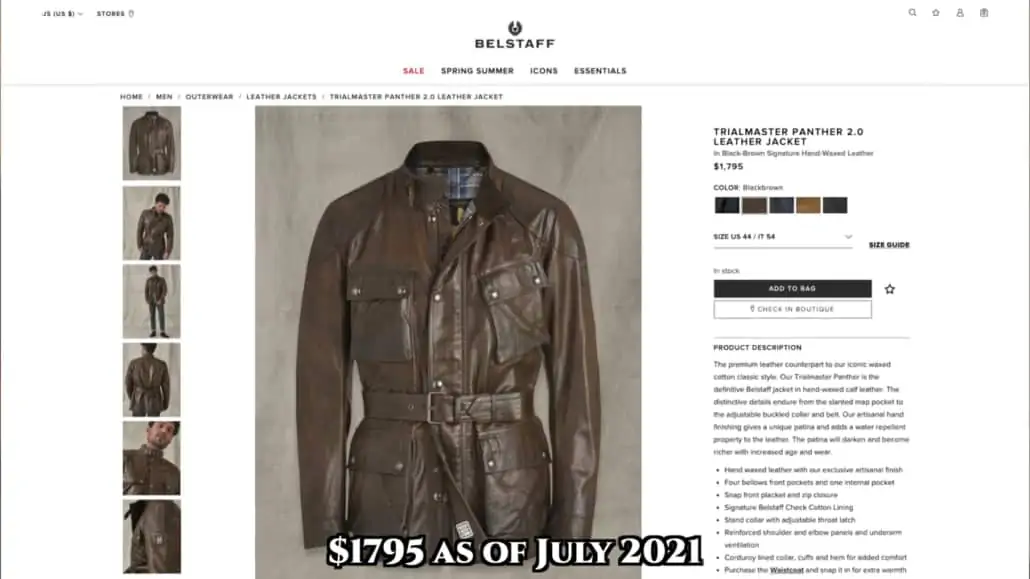
1. Is the jacket a just fashionable item?
The first thing to determine is whether the jacket is a trendy item that’s going to drop out of fashion anytime soon. The original Trialmaster jacket was made in 1948 and it’s been a cornerstone of Belstaff’s collection ever since.
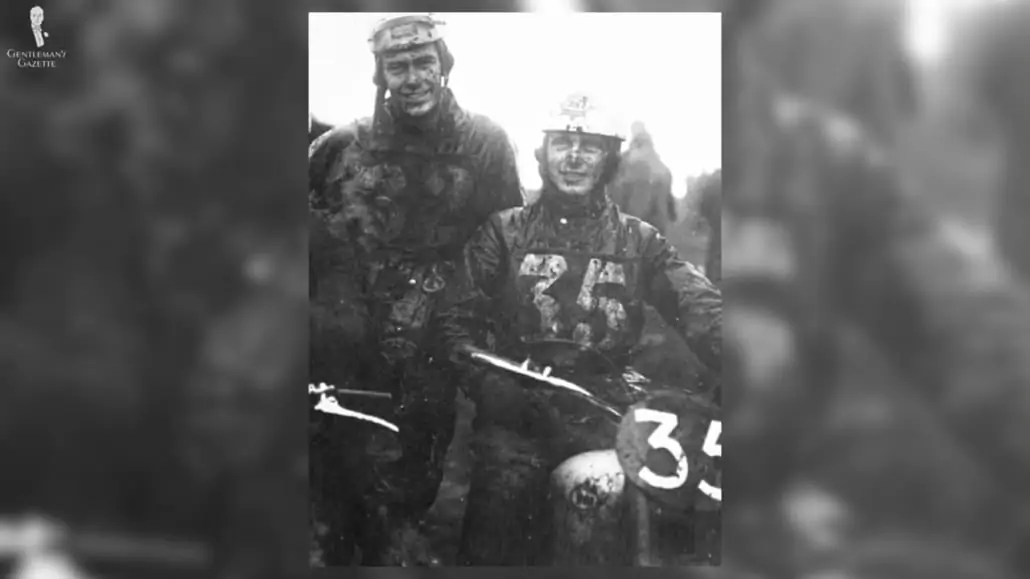
2. How well is the jacket made?
The Panther is constructed from high-quality waxed leather. This gives it a robust weight and feel and when testing the jacket for its water-repellent qualities, we found that it was actually more water-resistant than the traditional waxed cotton model. The jacket seams are neat and tidy with even stitching so it isn’t going to fall apart under normal wear and tear.
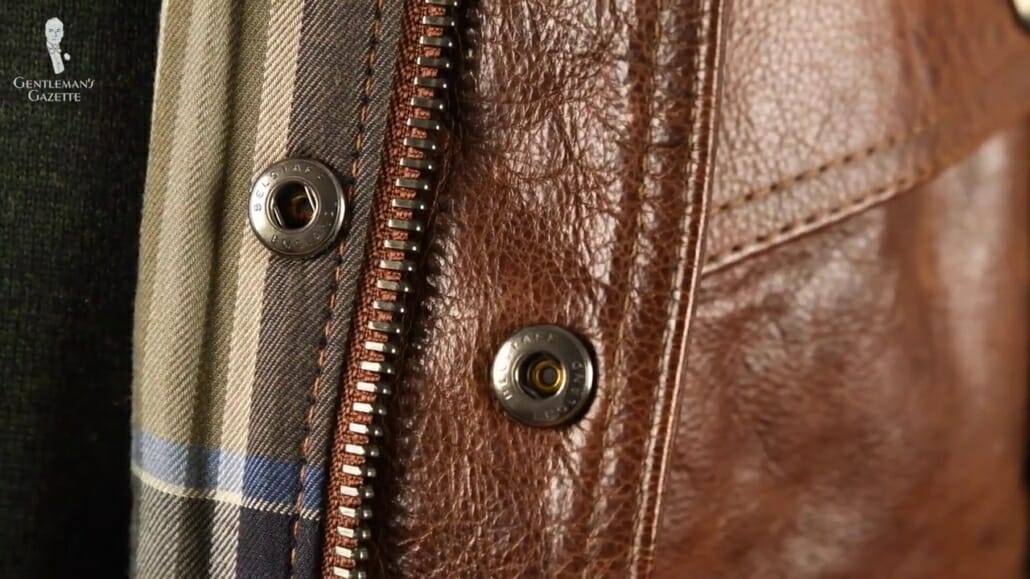
3. Finally, how often might this jacket be worn?
The answer to this question is certainly going to be different for every individual wearer. But, let’s look at the facts. The jacket is in a mid-weight, water-repellent leather, making it ideal for wear in cooler or transitional seasons. It’s well suited to more casual ensembles and can be easily paired with things like denim, chinos, or polo shirts or in other casual uses.
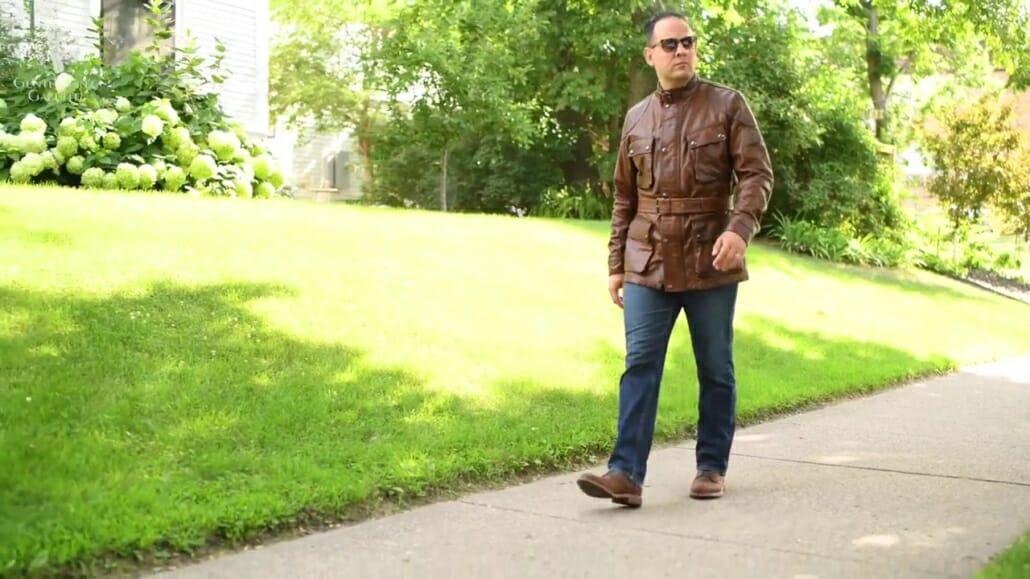
With that in mind, let’s generalize and say that you might wear the jacket once a week during both spring and fall for the next 10 years. So, we’ll take the price of $1,795 and divide by 240, which is the same as four weekends per month – three months of fall and three months of spring – over ten years. $1795 divided by 240 comes out to a rough cost per wear of $7.48.
Ideal Supplements to Cost Per Wear: 1. Research Before You Buy
Our final main topic of discussion for today will be how to use the principle of cost per wear to get the most out of your money.
First up, research before you buy, as it’s absolutely essential to do a bit of research on an item before you purchase it. The internet is full of advice and reviews so it can be a useful tool when considering making a new purchase. With that said though, it is worth exercising some caution when searching for online reviews.

Often, reviews can be quite subjective and reflect the biases of the writer, and thus, their opinions may not necessarily gel well with yours. Think of reading the Yelp reviews for your favorite restaurant, for example. Even though you think it’s great, others might not and there’s usually a driving force behind the review itself.
If someone has a bad experience, they’re more likely to be motivated to give something a negative review and in today’s environment, we should be more conscious than ever that reviews can be sponsored.
By the way, this is why we specify that Gentleman’s Gazette reviews are 100% not sponsored most of the time. And if and when they are sponsored, we’ll be sure to let you know. At the Gentleman’s Gazette, one of our passions is making sure that you can make the most informed choices possible as a consumer when considering purchasing luxury iconic menswear items.
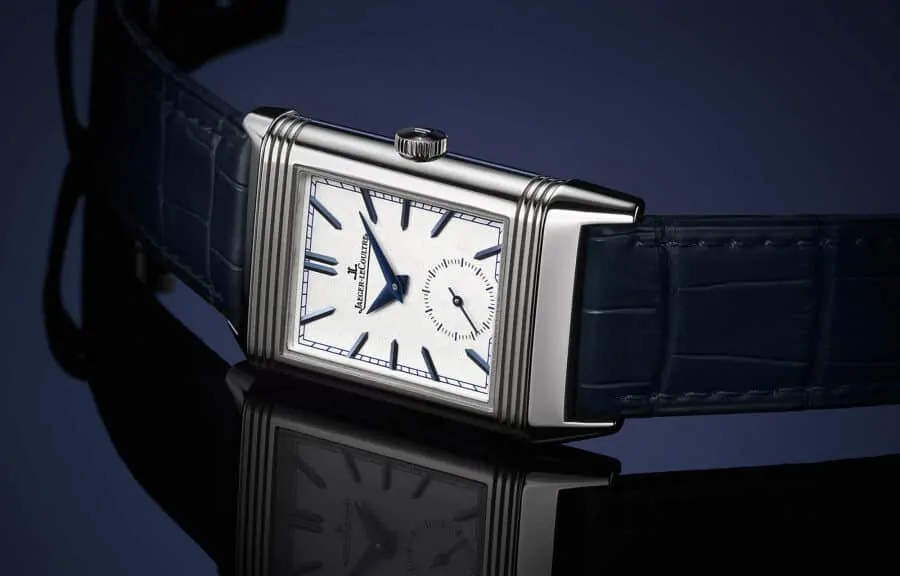
Simply put, we’ve been in similar positions before and we want to make sure that you don’t make the same regrettable mistakes that we have. And, of course, you can check out our long-running Is It Worth It? series where we evaluate different well-known menswear products to determine whether they’re worth your hard-earned money, which are also not sponsored.
2. Ask Yourself Some Questions Before Buying
Before committing to a purchase, it’s also a good idea to ask yourself a few searching questions. Things like, “Why am I focused on this particular item? Am I only buying it because it’s on sale? And could I find an alternative that would have a better cost per wear?”
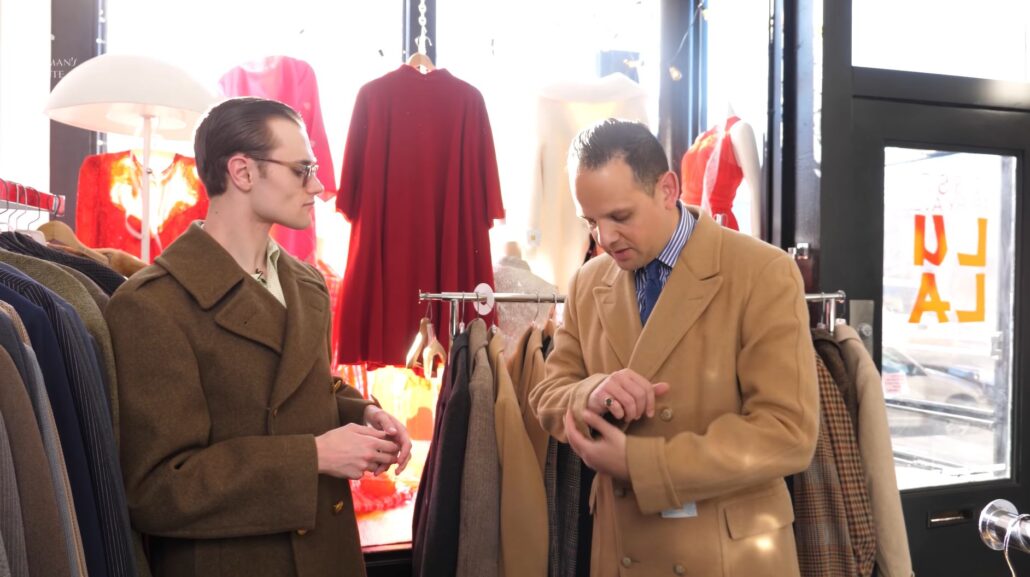
We can’t answer these questions for you, of course, but by asking them to yourself before you buy. You’ll be able to do so with more confidence and more information.
3. Save Up If You Need To
Our next piece of advice would be to save up if you need to. After all, there are going to be some situations where there isn’t a good substitute for the item you want to buy.
For example, a Rolex or Jaeger-LeCoultre Reverso watch will probably be a significant investment for most of us. And even if you’re looking at something with a lower upfront cost, there are going to be times when you’ll want to accept no substitutes.
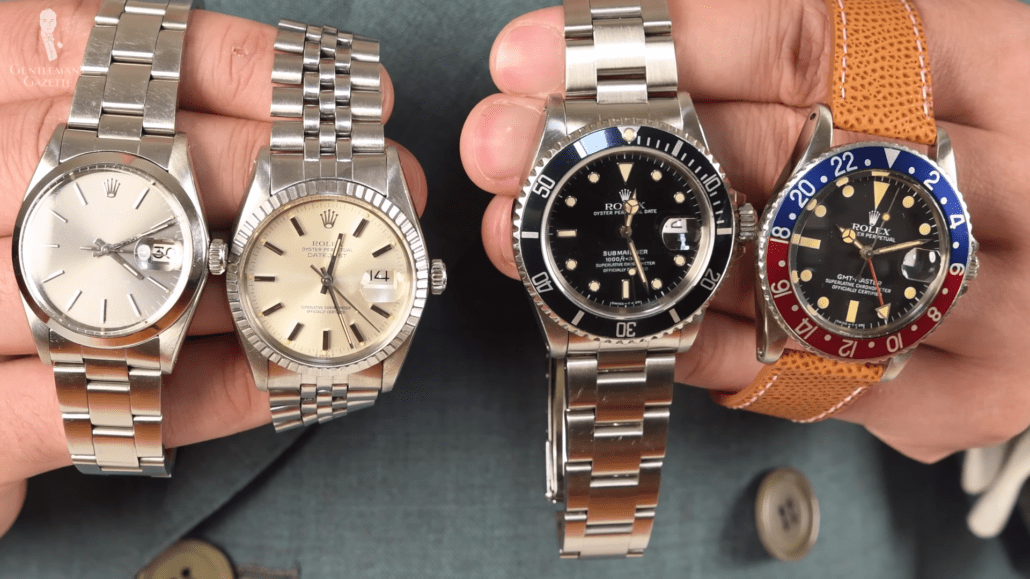
If you’ve done your research and you’re confident that you’re making what is the right decision for you, then it may simply be a case of saving up for a time before you can afford what it is that you want to buy.
4. Don’t Live Beyond Your Means
The flip side of this point then would be to not live beyond your means. We do understand that a deal can be very attractive if the price of an item has been dramatically reduced or if it’s the last one remaining in stock. But, simply put, if you can’t afford it, then you shouldn’t buy it.
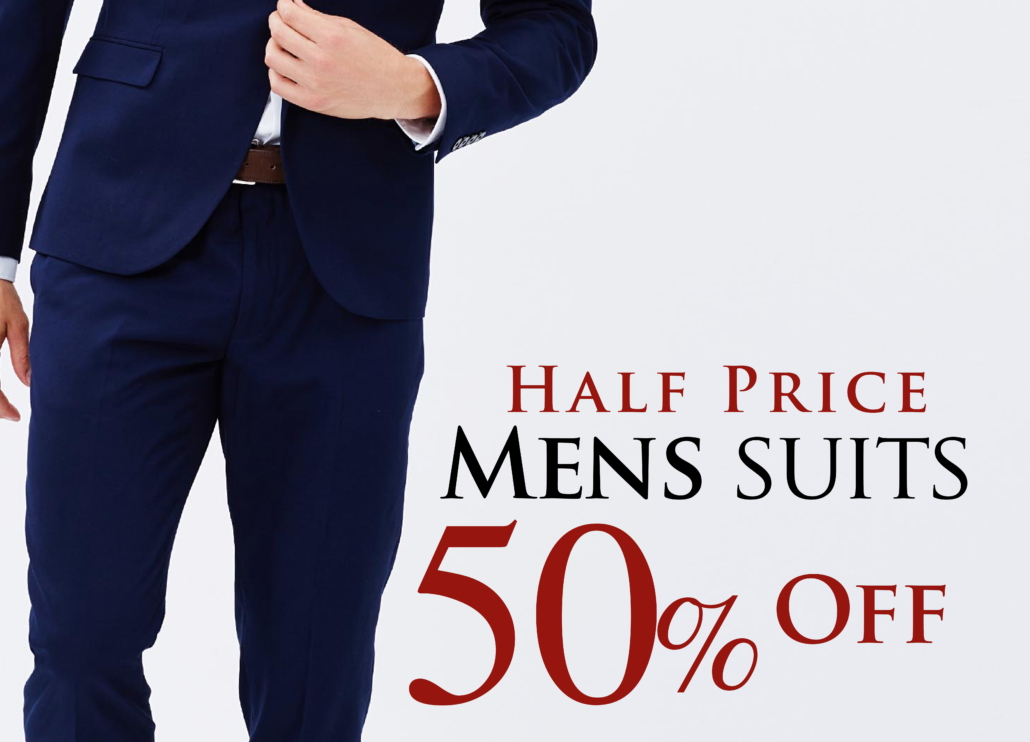
Also, don’t let things like a one-time-only deal stand in the way of your good judgment. The excitement of first seeing an item that you really want can be a very strong feeling. But, remember to temper it a bit with knowledge of your own budget as well as today’s question of cost per wear.
5. Look After Your Investments
And finally here in the financial realm, our last piece of advice for today would be to look after your investments. As we mentioned previously, the best way to increase the overall longevity and therefore, cost per wear of your items is to clean, maintain, and care for them regularly.
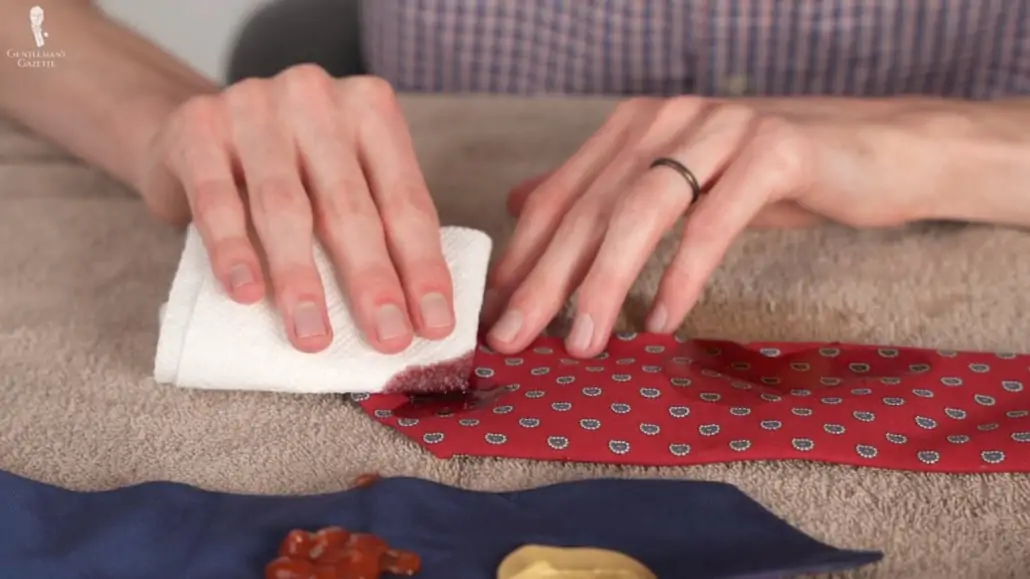
Be sure to do things like treat stains when they occur and launder and store your clothes properly. Similarly, be sure to polish your shoes regularly as the shoemaker John Wildsmith once famously said, “You’re either in your shoes or your bed, so it pays to invest in both.”
And indeed, investing in quality shoes will mean giving them care from time to time. Using a combination of shoe creams and wax polishes, you’ll be able to nourish the leather and increase the lifespan of your quality shoes.
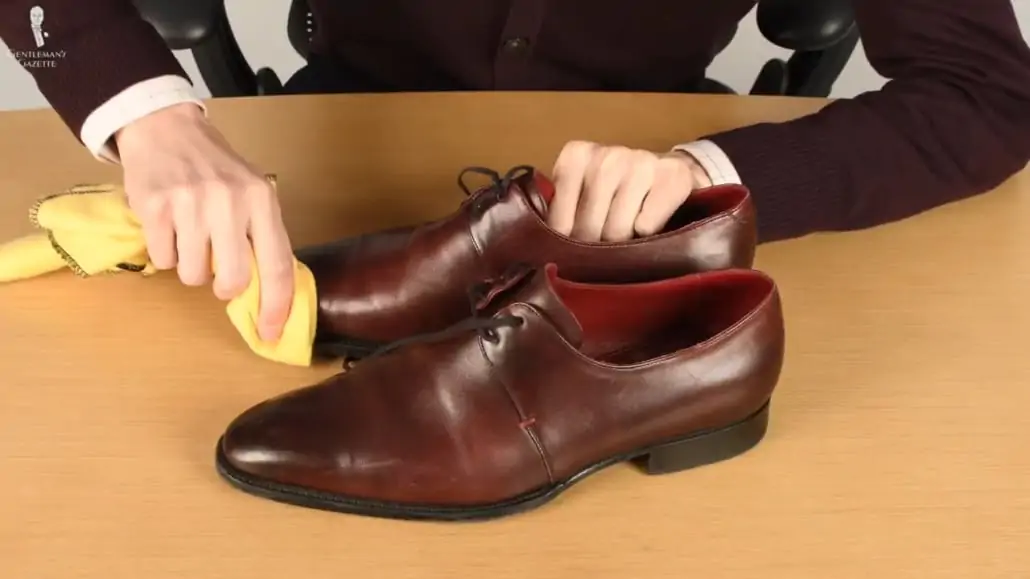
Although, no quality dress shoe is truly 100% waterproof. There are precautions you can take in that area, too, such as buying waterproofing sprays for your suede shoes, installing rubber half soles, or wearing overshoes when it’s rainy or snowy.
6. Enjoy Your Purchases
One last tip for today is to enjoy your purchases. Remember that buying something and then never wearing it isn’t going to be an enjoyable thing to do. Furthermore, it’s also going to be costly.
Think about it this way, if we look at the original cost per wear metric and divide by zero wears, that’s not good for math or your wallet. In other words, if you’ve made the decision to spend your money, be sure to also enjoy what you’ve bought.
Outfit Rundown
Many of the items I’m wearing have a relatively low cost per wear as I’ve gotten many uses out of them since originally purchasing them.
My brown pattern suit is in a conservative and dark color, so it’s appropriate for most formal situations, at least these days. But, its pattern does provide a bit more visual interest so I can get more variety out of it that way.
A pastel blue dress shirt is a staple in any man’s wardrobe. And while we specifically singled out black cap toe Oxfords as an example in today’s video, brown ones in a shade like I’m wearing today are also quite versatile.
My accessories today come from Fort Belvedere and we’ll start with the navy grenadine tie, which, of course, was another one of our examples of an accessory that effectively has an indefinite lifespan. Other accessories which contribute to this blue color feel include my pocket square in a sky blue color and featuring a white x-stitch, my boutonniere, which is a blue dwarf delphinium, and my gold-plated, sterling silver, eagle claw cufflinks featuring lapis lazuli as the stone.
Finally, my two-toned, shadow-striped socks in navy blue and royal blue tie into the color tone and also, harmonize with the striped pattern in the suit. And, as an aside here, my suspenders today also happen to be blue and they’ve got a relatively low cost per wear as well, given that they can accommodate both clips and fasteners for traditional suspender buttons, so I can get more use out of them that way.
And, of course, for a wide selection of accessories, including boutonnieres, pocket squares, socks, cufflinks, ties, and more, be sure to check out the Fort Belvedere shop.

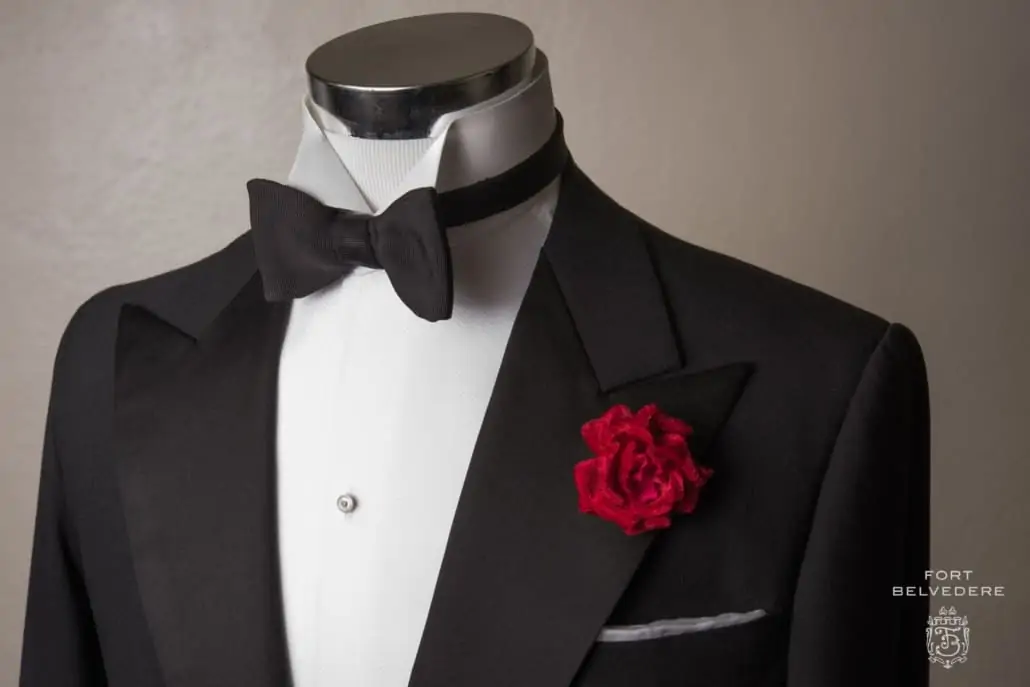
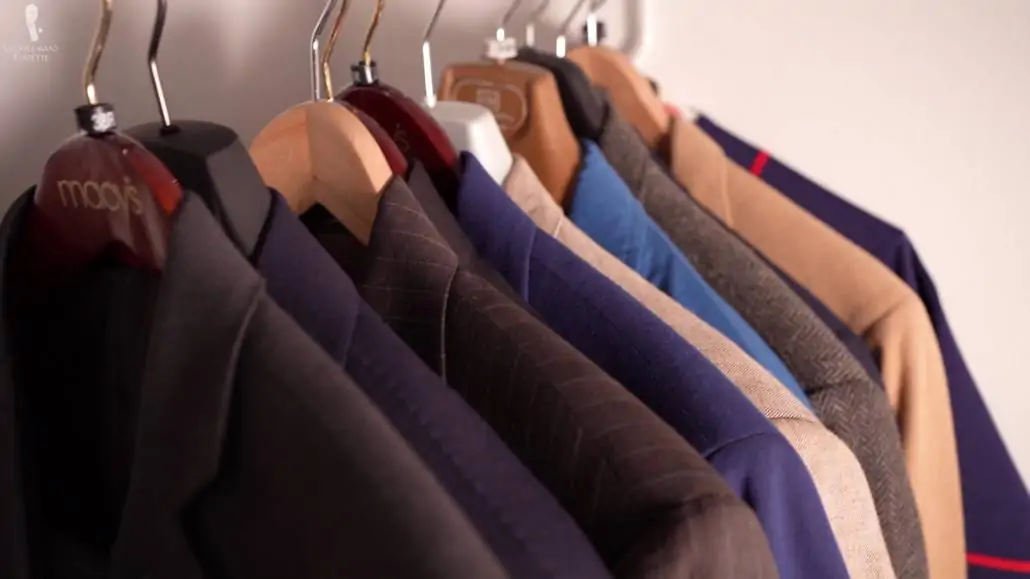
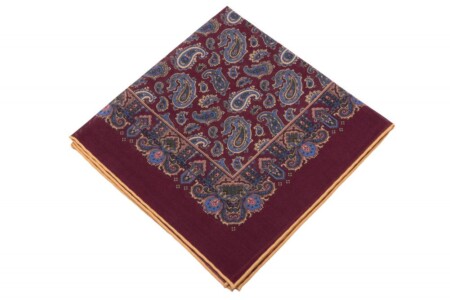
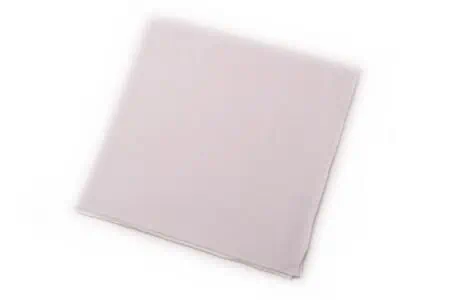
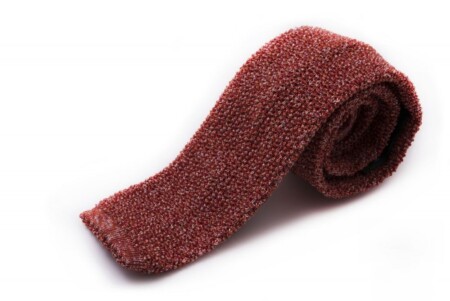
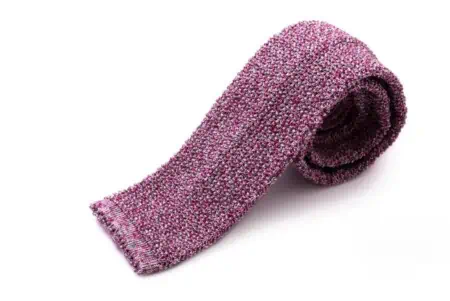
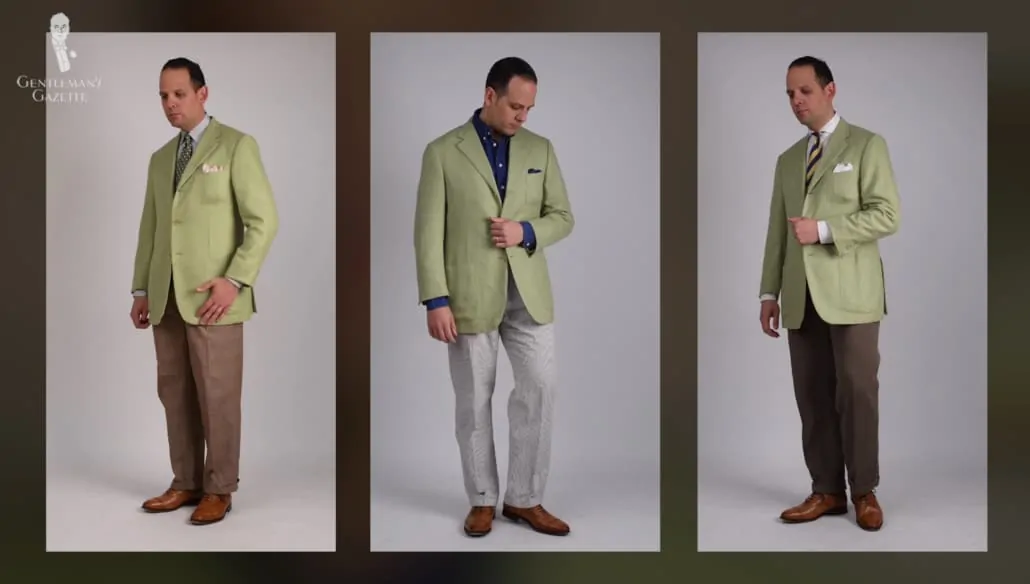
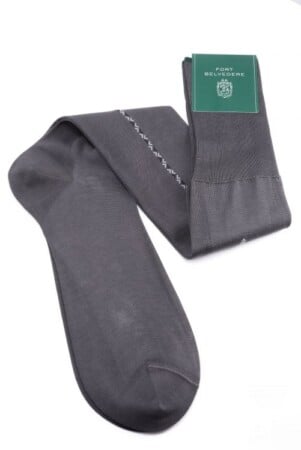
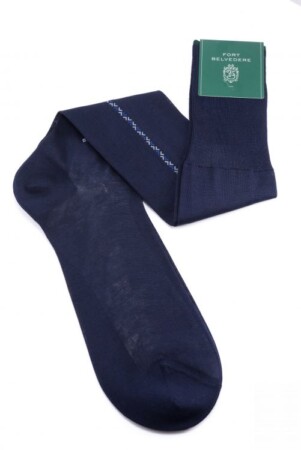
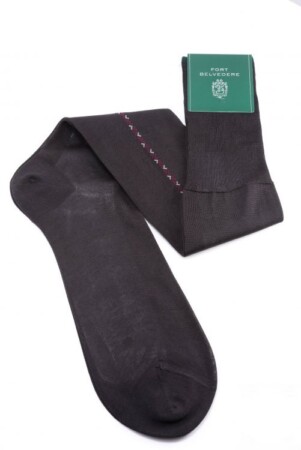
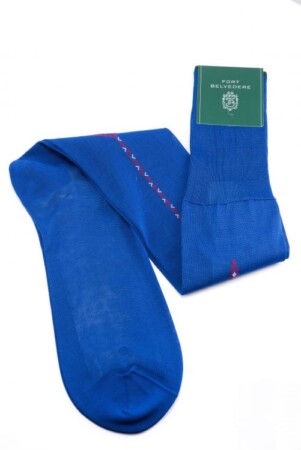
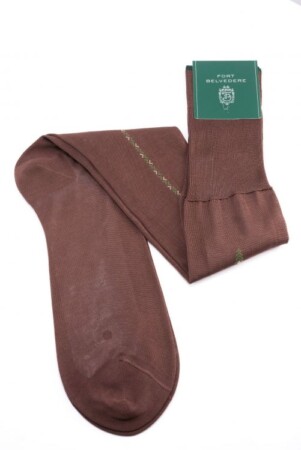
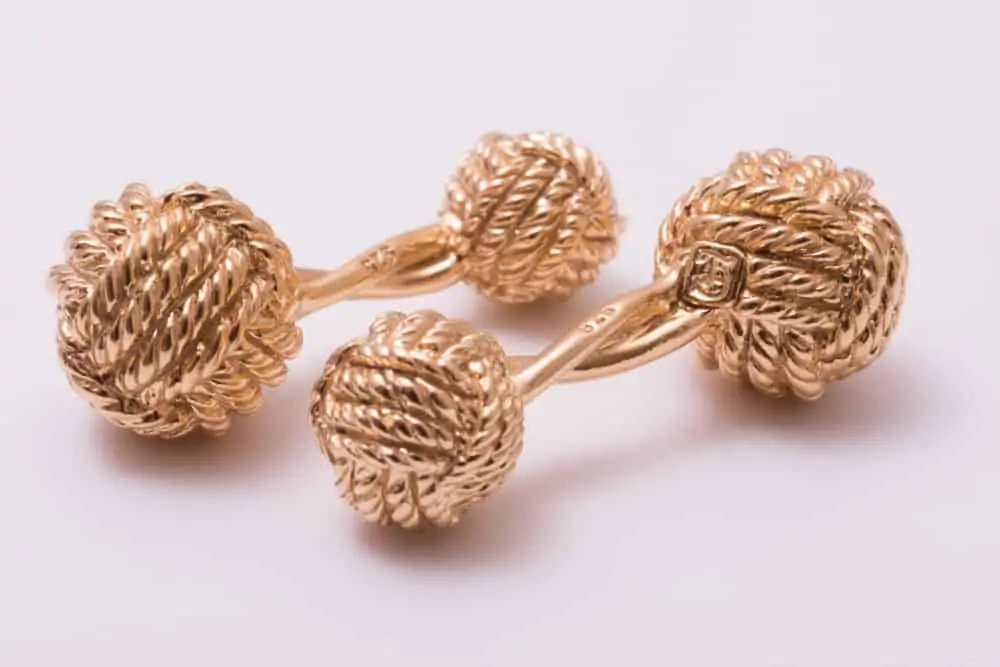

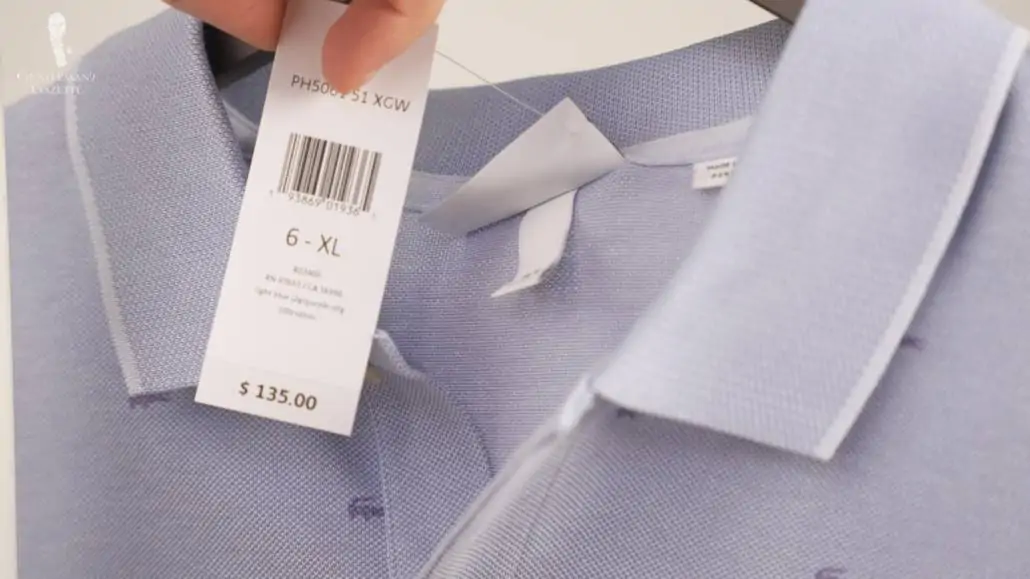
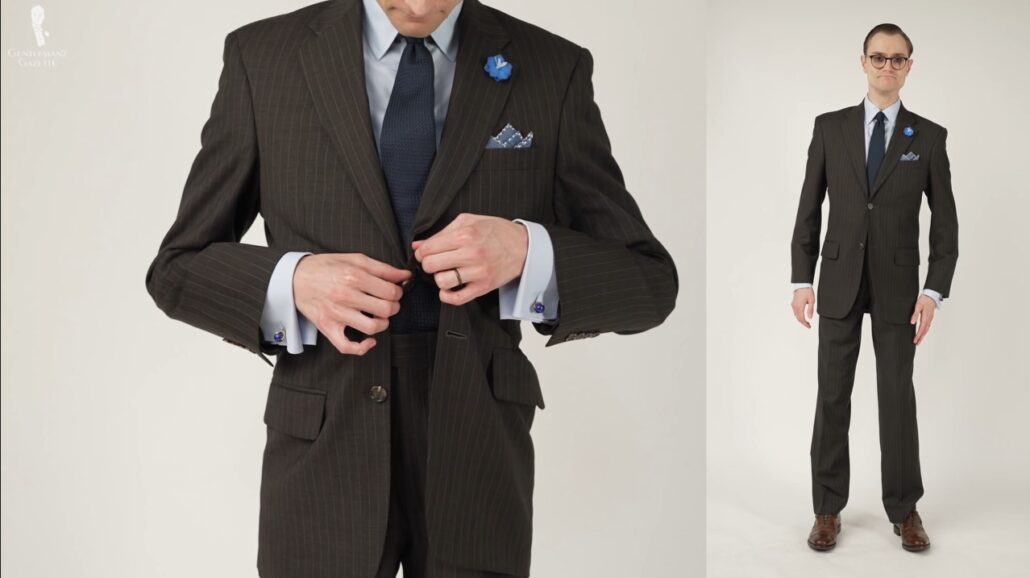
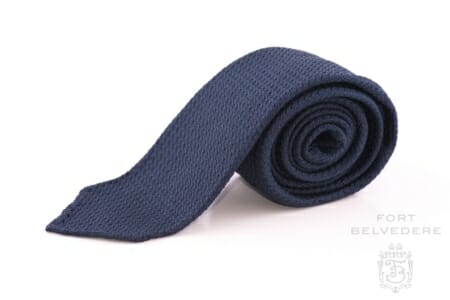
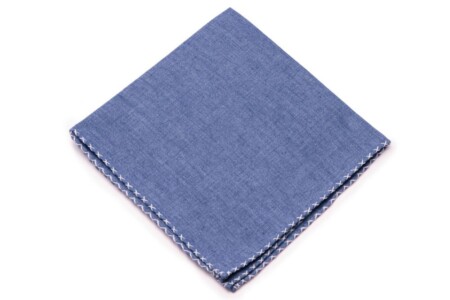
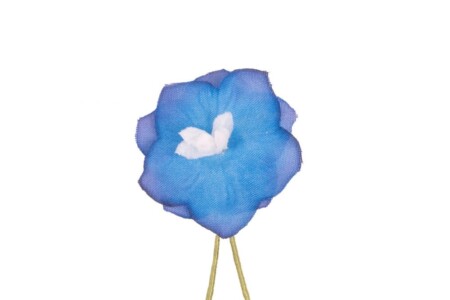
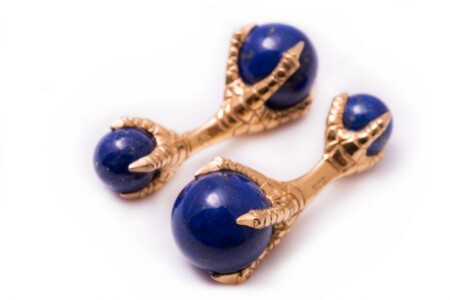
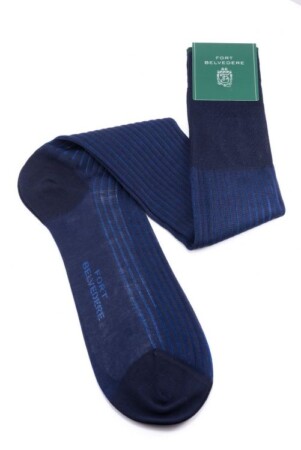
Overall a solid piece of advice. I only wonder what will happen if one buys an item and never wears it, the number of wears being therefore zero. Maybe the almost infinite number that will result is a good metaphor for buyer’s remorse, though not an exact representation of the resulting cost per wear.
Indeed, Alexander! As we alluded to briefly at the close of the video, dividing by zero throws a wrench in cost-per-wear, as it does with a few disciplines in mathematics. I’d agree that the resulting “infinite cost” should be a concrete representation of buyer’s remorse. Thanks for reading!
Good article. Treat Trains?
Thanks, Bill – good spot, we’ve updated the text!
Are there any “benchmarks” to compare for the different categories of clothing?
Hi Forrest, it’s difficult to set a benchmark for various categories as it would mean establishing price points, too. Instead, we want to offer the tools (such as this very article and video) so that our readers are armed with the knowledge needed to make purchasing decisions.
We have many articles which will help you spot quality clothing – just search for the category you want to learn more about – and you can take a look at our ‘Is It Worth It’ series where we review specific items.
Saw the picture of “a hole in a sock”, it sounded like an obscure British sausage dish. Ha Ha!
Mr. Alan Flusser is famous for quoting the idea that the most expensive clothing in your wardrobe is that which you don’t wear. Makes sense.
I get shirts from ctshirts.com because I have a 30 inch sleeve length. Have you ever done a video on there bespoke suits, sport coats, trousers or shirts? They have three stores in NYC but only one does the bespoke.
Hi Douglas, we have a guide here on Charles Tyrwhitt
I don’t have any personal experience of any “custom” offerings from Charles Tyrwhitt, but from what I can see on their website, they do not offer true bespoke. Instead, they offer a made-to-measure service that seems to start at a reasonable price for a quick turnaround time.
You can learn more about the difference between made-to-measure and bespoke suits in this guide
Greetings,
My watchword in these matters has always been, “Is the purchase worth it to you?”
I know that my closet houses inexpensive items that I have worn, without thought, many times.
Then, there are those garments that have either been worn once or twice, or not at all, that still give me great pleasure knowing they are on hand.
After fifty years of paying strict attention to my wardrobe, I have come to the conclusion that I have worn clothing that should have been avoided, and not worn item of sublime taste that should have been donned until they are beyond repair.
Best regards,
Andrew Gregg,
Palm Springs, California.
Good article. I especially liked the emphasis on caring for the items we purchase. I have practiced this personal attention to detail for many years now and it has served me well. While it was primarily born out of the impoverished state of my finances when I was younger, it taught me skills I still use today. It does work well as I still have items in very good shape that I have been caring for since my college years in the early 80’s.
Indeed, routine care definitely extends the life of the garment and therefore gets you even more bang for your buck. Mending socks, sewing buttons, fixing hems, and other fairly easy sewing tasks should be second nature. It keeps you from having to pay (and wait on) a tailor to do something that can be done at home in minutes. Set aside some time each week to do a little maintenance here and there (including shoe polishing). Needles and thread are cheap, as is practice. I even keep some in my desk drawer at work for emergency repairs.
And yes, great article.
A factor that you left out of the equation is maintenance cost. A great example is a Rolex. Every four or five years you have to have your watch serviced. Depending on watch style you own will effect the cost.
*maintenance cost and insurance.
We had considered maintenance cost as a part of cost-per-wear, but this is a factor that can vary greatly in both amount and frequency. In your example of a Rolex service, this cost will be different from the price of dry cleaning a suit or replacing a button on a jacket, but they are both considered maintenance costs and will happen at different frequencies.